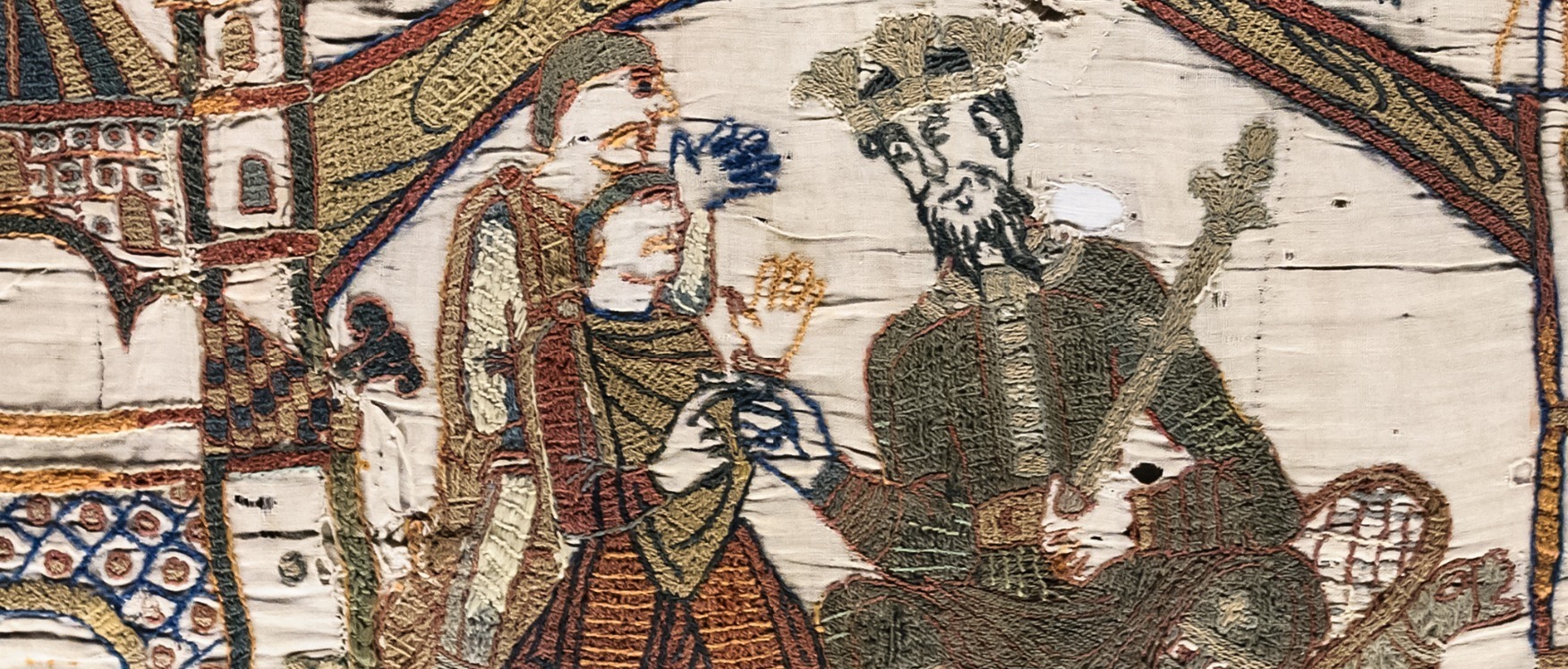Edward the Confessor
Posted on 4th January 2021
Edward was born around 1003 – 1005 in Oxfordshire, England, the son of Ethelred the Unready and Emma of Normandy. He had a brother Alfred, sister Godgiful and many half-brothers. He grew up to be a deeply religious man, devout in his beliefs.
Following the Danish invasion of England in 1013 by King Sweyn, Edward went into exile with his family in Normandy, France. King Sweyn died on 3 February 1014 and the English agreed terms for Ethelred to be returned to the throne; Edward and his family then returned to England.
The Danish having lost their leader now swore allegiance to his son Canute, but he was not in a position to fight and left England vowing to return.
In 1016, Ethelred died and Edward went into exile again.
Canute returned with his army and over a few months he conquered much of England. Edmund Ironside, ruling England at the time, died on 30 November 1016; Canute was now King of England.
Edward was to spend over 25 years in exile, not returning to England until 1041, to the court of his half-brother Hardecanute.
In 1042 following Hardecanute’s death, Edward, supported by the most powerful earl in England, Godwin, became King of England. He was crowned on 3 April 1043 at the Cathedral in Winchester.
Reign 1042 - 1066
Although Edward was King, he spent much of his time dealing in religious matters; Godwin held the real power in England.
On 23 January 1045 Edward married Godwin’s daughter Edith. It was hoped this would continue to cement their good relationship however, Edward and Godwin fell out with each other in 1049.
This fallout was made worse in 1051 when Edward appointed a Norman, Robert of Jumieges as Archbishop of Canterbury, against Godwin’s wishes. This and further Norman appointments were unpopular with the people.
Eustace II of Boulogne, Edward’s brother-in-law visited him following trouble caused by his men in Dover. As Godwin was Earl of Kent, Edward ordered him to punish the men, but Godwin refused and took the men’s side. This caused a rift between Edward and Godwin forcing Godwin to raise an army against Edward, but neither man wishing to fight; they agreed a truce. Godwin was banished from England and all his estates were confiscated, Edward also dismissed his wife Edith and confined her to a convent.
Godwin and his son Harold returned to England with force in 1052, demanding the king return their estates and remove all Norman’s from positions of power.
Edward, unpopular with his people at this time was unable to raise an army against Godwin; he had no choice but to agree terms. Edward returned Godwin’s estates, exiled his appointed Norman’s including the Archbishop of Canterbury and recalled his wife.
Godwin died on 15 April 1053 and his son Harold succeeded him and became the Earl of Wessex.
The House of Wessex was in a weakened state when Harold took charge; none of his brothers were earls at the time, but this changed following a succession of deaths. Harold’s brothers were able to gain land and titles and were to control much of England.
It is not known if Edward was happy with the power that the Godwin brothers held, but he did little about it.
Control of Wales was taken in 1063, but it is said that Harold had more to do with this than Edward. In 1065 the tenants of Northumbria rebelled against the rule of their earl and Edward negotiated with them and banished the earl. It is believed the humiliation of negotiating with rebels caused Edward’s health to deteriorate.
Edward’s marriage had not produced an heir, but an heir had to be named. Edward first decided on his nephew, Edward, son of his half-brother Edmund Ironside, but he died shortly after returning to England. Then it is believed he chose William, Duke of Normandy to follow him, but it was Harold Godwinson who took the throne.
Edward the Confessor died on 5 January 1066 and is buried in Westminster Abbey.
He was the first Anglo-Saxon and only King of England to be canonised.
Edward’s greatest achievement was the building of Westminster Abbey in 1042 – 1052. This was the first Norman Romanesque (architectural style) church in England. It was finally completed after his death in 1090, however subsequently demolished in 1245 and replaced by the Westminster Abbey that still stands today.
Tagged as: Junior Middle Ages
Share this post:





